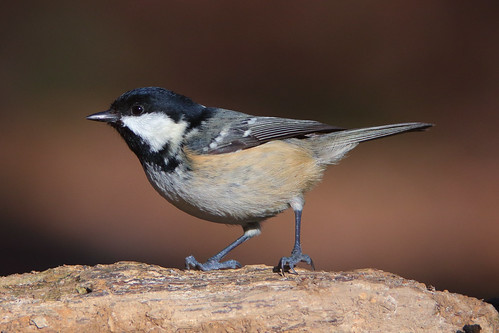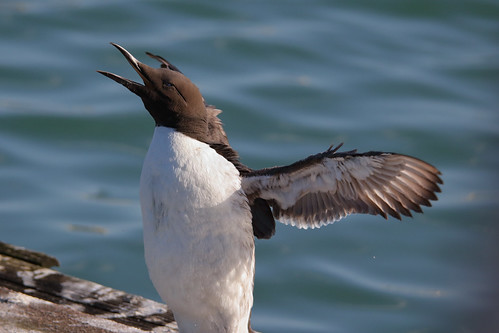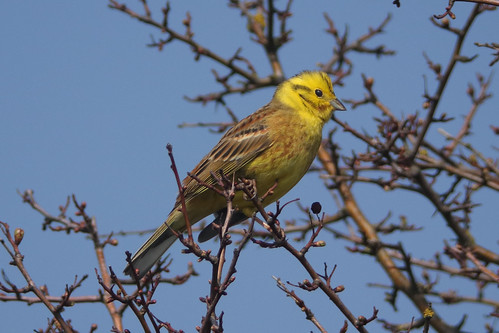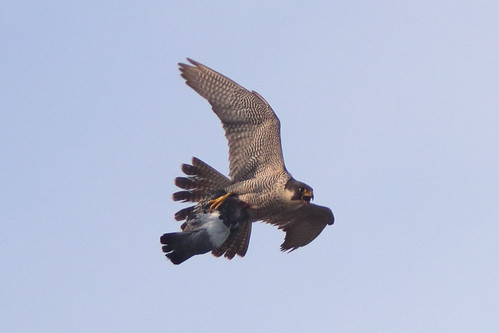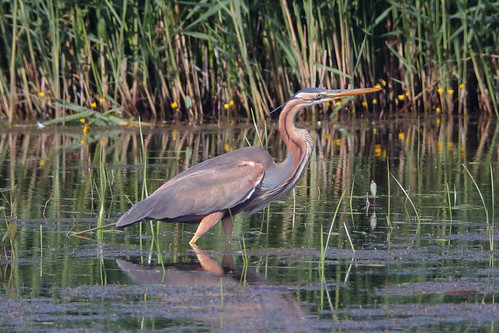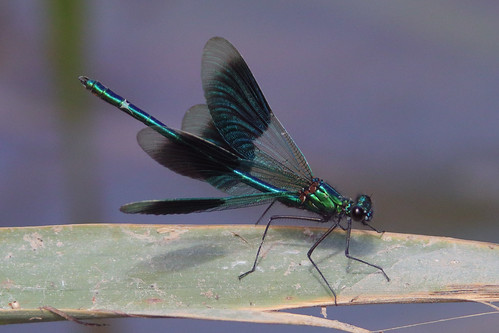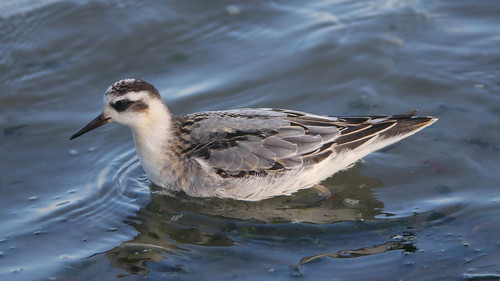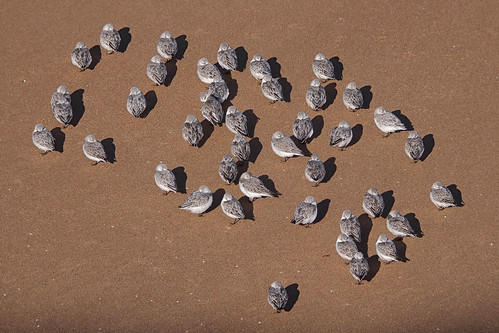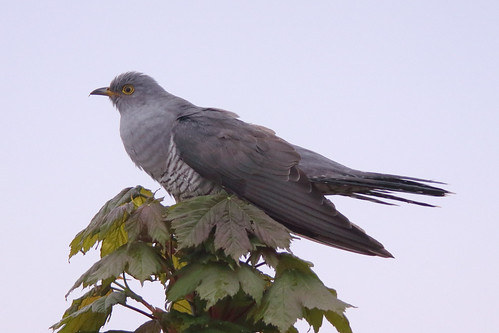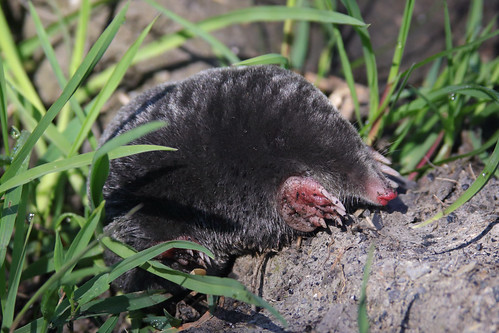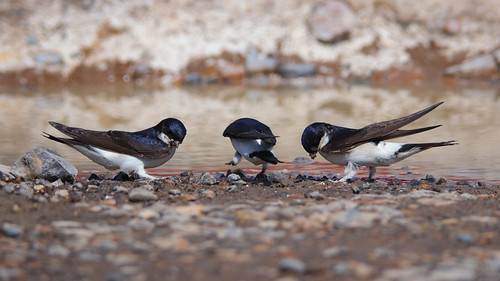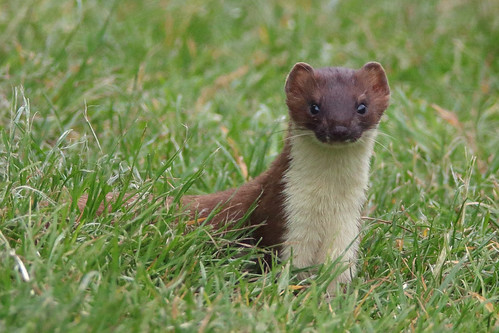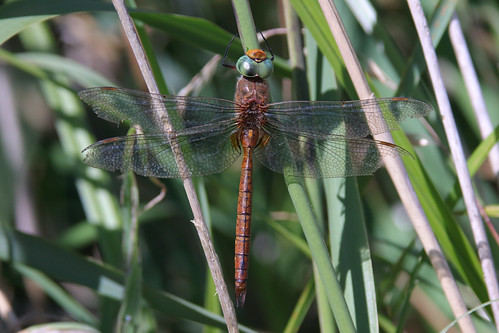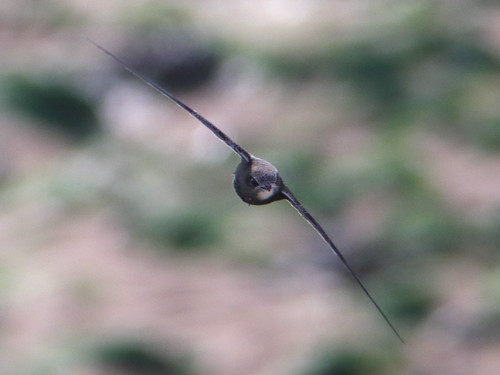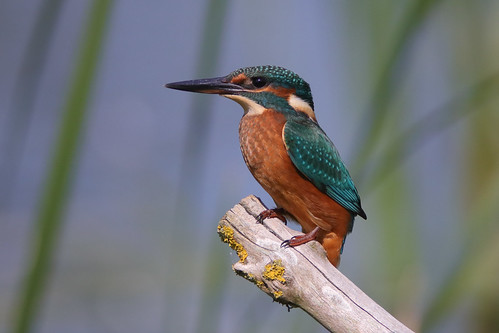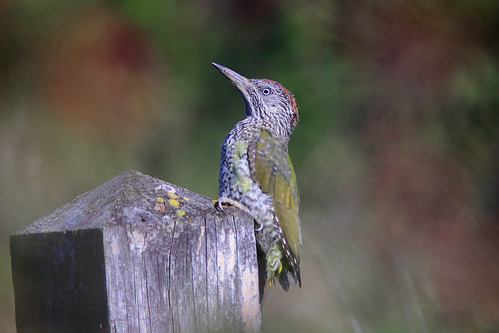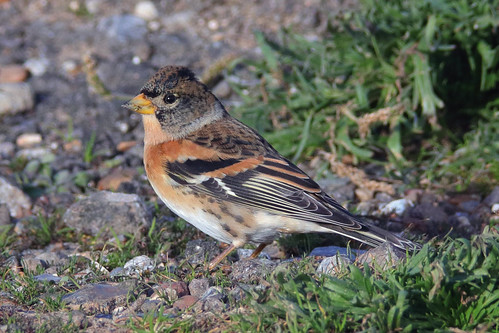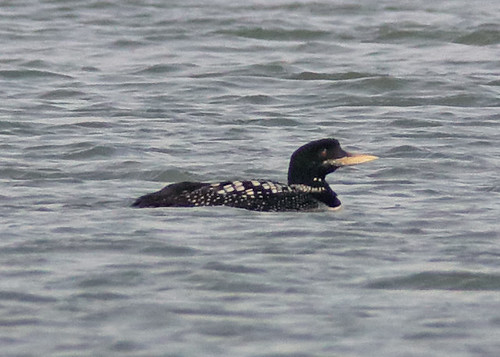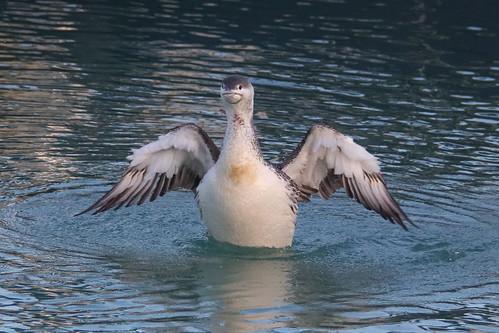A very wet (and unseasonably cold) autumn put a bit of a dampener on 2019, but otherwise it was another good year for photos, with a few surprises along the way...
January
An old favourite to begin - a Stonechat at North Foreland:
February
A long overdue return visit to Bossenden to see some woodland birds, including this Coal Tit:
And a Nuthatch:
March
A Guillemot (not a penguin) stretching its wings at Ramsgate:
No mistaking this Yellowhammer at Dover:
April
More wing-spreading, this time courtesy of a Tufted Duck at Stodmarsh:
May
A Pied Crow (of all things) on Broadstairs jetty:
June
+ 1 Peregrine, -1 pigeon:
I'd like to tell you I spent hours patiently waiting for a glimpse of this elusive Purple Heron, but it emerged from the reeds only a few minutes after I entered the hide. After catching a couple of fish it flew off - apparently never to be seen again. Sometimes (but only sometimes) I'm in the right place at the right time.
July
The month in which winged insects take centre-stage, while the birds enjoy a well-earned break.
This is the first shot of a Banded Demoiselle I've managed where the wings weren't completely closed:
August
X marks the Dragonfly spot:
September
A Snipe at Stodmarsh, photographed from the Reedbed Hide:
This very charming Grey Phalarope at Birchington was another first for me in 2019. I took a Friday off work to see it (and lucky I did because it was gone by Saturday).
October
An shot looking over the cliff at the Kingsgate Sanderling roost:
November
This might well be the second-most photographed bird in England (after that Cuckoo at Thursley Common), but I never get tired of seeing a Kingfisher:
December
And finally, the obligatory Kestrel, seen here flying off with a tasty meal:
All the photos on this page were taken with a Canon 80D DSLR and my trusty Tele Vue-60 refractor - that's right, no autofocus.
Showing posts with label refractor. Show all posts
Showing posts with label refractor. Show all posts
Tuesday, 31 December 2019
2019 in Pictures
Sunday, 13 January 2019
Into the Orion Nebula
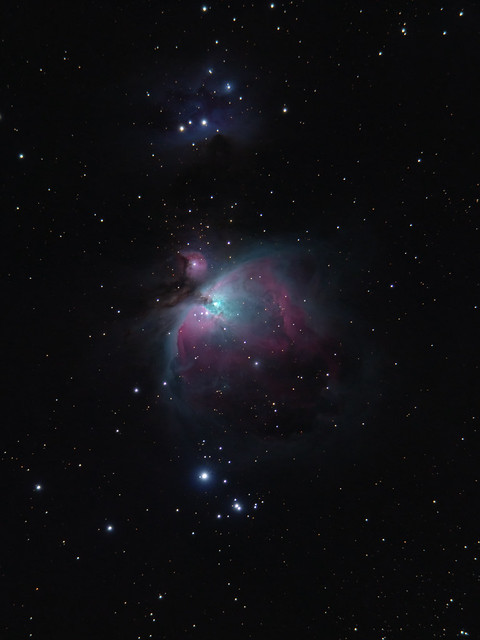 |
| M42, Orion: Tele Vue 60 + Canon 80D + Vixen Super Polaris |
"An unformed fiery mist, the chaotic material of future Suns" - William Herschel, 1789Herschel's description (written long before spectroscopy revealed the true nature of gaseous nebulae) could hardly have been more prescient. The Great Orion Nebula (Messier 42) is indeed a cradle of new stars (at 1,300 light years, the nearest star-forming region to our own sun), visible to the naked eye as a misty patch in Orion's Sword on winter nights.
Viewing M42
I'm occasionally asked what it looks like through a telescope: a one-word answer would be "Majestic", but don't expect to see the full extent of the nebula - or indeed the vivid colours that you get in photos like the one above. As with most deep-sky objects, the Orion Nebula rewards careful and prolonged examination. Here's a sketch I made a long time ago (for GCSE Astronomy coursework!) illustrating the typical low-power view through a small telescope under suburban skies:
So far the weather has only allowed me one opportunity to look at M42 with the XT10, but even under less than ideal viewing conditions it was immediately obvious that the extra aperture had improved the view dramatically. The core region had a strong green tint and averted vision made it so bright that the Trapezium was almost lost in the glare. Lots of finely detailed structure was visible with dark rifts cutting through the nebulosity. The Ultrablock filter wasn't really necessary for such a bright object, but it did seem to increase the overall extent of the nebula, particularly on the northern side.
Photographing M42
For any birders who've made it this far, the Orion Nebula is arguably to astrophotography what the kingfisher is to bird photography, the gateway drug that lures you into a lifetime hobby. (It even comes with its own fish, of a sort.) The image at the top of this post is a stack (not a mosaic) of 108 thirty-second exposures (plus 15 dark frames and 21 flat frames). As I'm still shooting unguided (for now) I've been careful not to choose targets too far away from the celestial pole, so at -5 degrees declination M42 presented the biggest test yet of my polar alignment accuracy. Fortunately the Great Nebula is a forgiving target - you can pull out a considerable amount of detail and colour even with relatively short 30-second subs. If you look closely, some slight trailing is evident, but not enough to spoil the final image.
Processing M42
As I've said before, acquiring all the light-frames (plus darks and flats) is only half the battle; there's still a lot of work to do. The image above was assembled using the freeware program Sequator. Compare it with my first attempt using the more widely-known freeware DeepSkyStacker. The samples on the Sequator website suggest it's optimised for landscape astrophotography (i.e. wide-angle shots in which the horizon is visible), but it seems to do an equally good job for deep sky photography. In terms of workflow, I certainly found it easier to process the stacked image produced by Sequator. As you can see in the mouse-over comparison below, Sequator did a much better job of retaining the detail around the Trapezium area. There's less noise too, although the DeepSkyStacker version shows more of the fainter regions of the nebula.

It's also worth noting that Sequator did an excellent job of identifying and removing the light pollution gradient. DeepSkyStacker doesn't cater for this so I used the Light Pollution Removal tool in Noel Carboni's Astronomy Tools Actions set (which, despite having more user control, did on this occasion leave a series of contour lines in and around the brightest parts of the nebula). The Sequator stack did contain some colour noise, but this was easily removed using the Colour Blotch Reduction tool from the same set.
Other pros and cons: Sequator was fast (less than 30 minutes processing time compared to up to an hour for DSS). However, it also left some curious purple "appendages" around some of the brighter stars, as shown in the crop below:

I've seen Sequator described as "stacking for dummies" on one popular astro-forum, but on the above evidence I think it'll be this dummy's image-stacker of choice for the foreseeable future. This is by no means a rejection of DeepSkyStacker, but more likely an indication that I still haven't learned how to get the best out of it.
I like the colours better in the Sequator version too, although that's a matter of personal taste.
Which one do you prefer?
Sunday, 30 December 2018
2018 in Pictures
I didn't think I'd be able to top the previous year, but 2018 served up a bumper crop of sightings (September in particular had enough highlights to fill a best-of list all by itself). But here for your viewing pleasure, after much vacillating, are the pick of the bunch:
January
There's nothing like a Waxwing to brighten up a dull winter's day:
February
I've got to include at least one Kestrel (it's the Law) and this bird was a bit special:
March
Why go to the trouble of catching your own frog when you can steal one from a Marsh Harrier?
April
The light wasn't great that morning, but it's not every day that a Cuckoo pops up right in front of you:
May
Here's something else you don't see every day, a Mole out in the open:
...though it really wasn't the best day for small furry things to come out of hiding.
Also at Stodmarsh, a Hobby grabs an in-flight snack:
June
At Foreness Housemartins collect mud for their nests:
And a Stoat pops up at Stodmarsh:
July
A typically quiet month for birds, but not for dragonflies such as this Norfolk Hawker:
August
Last ones to arrive; first ones to leave. A Swift prepares for its autumn migration at North Foreland:
September
1st September at Grove Ferry was one of those rare and remarkable days where everything falls into place. It included Spotted Flycatchers and a Bullfinch (in the same tree), a Whinchat, and even a surprise Bittern. But it was the reserve's star attraction that stole the show:
Return visits later in the month uncovered a Small Copper butterfly (the first one I can recall seeing at the reserve), plenty of Willow Emerald damselflies, Lizards, and this juvenile Green Woodpecker:
October
Winter birds start arriving along the coast, including this handsome Brambling at North Foreland:
November
Not the best photo, but arguably the best bird of the year; Scott Haughie's White-billed Diver (in summer plumage!) which attracted birders and photographers from across the country:
I expect I'll be frowned on in some quarters for including it, but this ESCAPED Hoopoe brought some entertainment (unless you're a grub) to an unlikely part of Thanet:
December
Another month, another loon; a Red-throated Diver (not in summer plumage) in Ramsgate Harbour:
All the photos on this page were taken with a Canon 80D DSLR and the trusty Tele Vue-60 refractor.
In the next post, I will be returning to outer space.
January
There's nothing like a Waxwing to brighten up a dull winter's day:
February
I've got to include at least one Kestrel (it's the Law) and this bird was a bit special:
March
Why go to the trouble of catching your own frog when you can steal one from a Marsh Harrier?
April
The light wasn't great that morning, but it's not every day that a Cuckoo pops up right in front of you:
May
Here's something else you don't see every day, a Mole out in the open:
...though it really wasn't the best day for small furry things to come out of hiding.
Also at Stodmarsh, a Hobby grabs an in-flight snack:
June
At Foreness Housemartins collect mud for their nests:
And a Stoat pops up at Stodmarsh:
July
A typically quiet month for birds, but not for dragonflies such as this Norfolk Hawker:
August
Last ones to arrive; first ones to leave. A Swift prepares for its autumn migration at North Foreland:
September
1st September at Grove Ferry was one of those rare and remarkable days where everything falls into place. It included Spotted Flycatchers and a Bullfinch (in the same tree), a Whinchat, and even a surprise Bittern. But it was the reserve's star attraction that stole the show:
Return visits later in the month uncovered a Small Copper butterfly (the first one I can recall seeing at the reserve), plenty of Willow Emerald damselflies, Lizards, and this juvenile Green Woodpecker:
October
Winter birds start arriving along the coast, including this handsome Brambling at North Foreland:
November
Not the best photo, but arguably the best bird of the year; Scott Haughie's White-billed Diver (in summer plumage!) which attracted birders and photographers from across the country:
I expect I'll be frowned on in some quarters for including it, but this ESCAPED Hoopoe brought some entertainment (unless you're a grub) to an unlikely part of Thanet:
December
Another month, another loon; a Red-throated Diver (not in summer plumage) in Ramsgate Harbour:
All the photos on this page were taken with a Canon 80D DSLR and the trusty Tele Vue-60 refractor.
In the next post, I will be returning to outer space.
Labels:
80D,
birds,
blogpost,
canon,
DSLR,
east kent,
EOS,
grove ferry,
kilner,
photography,
refractor,
stodmarsh,
Tele Vue,
telescope,
TV60
Tuesday, 9 October 2012
Ocean of Storms
At first glance Oceanus Procellarum (the Ocean of Storms) appears to be one of the less interesting regions of the Moon, presenting to the casual observer nothing more than a vast, monotonous plain of dark grey lava, dotted with the occasional impact crater. But look closer and you'll find evidence of ancient volcanism on a huge scale, unlike anywhere else on the lunar surface.
Here's a 100% crop showing the Aristarchus plateau - an diamond-shaped block of uplifted terrain dominated by the dazzling crater Aristarchus and the 160 km-long Schröter's Valley:

Easily visible in a small telescope, the valley is the largest and perhaps most dramatic example of a lunar rille, a sinuous channel cut (a very long time ago) by fast-flowing lava.

Lunar Orbiter 2 photographed the complex from an oblique angle, giving an idea of the relative height of the domes, and a few decades later the Japanese SELENE/Kaguya mission discovered an intriguing dark pit in the area (shown here in a high-resolution image taken by the Lunar Reconnaissance Orbiter).
Incidentally, if you move your mouse over the cropped images you can compare the finished versions with one of the original photos, illustrating the dramatic improvement that image-stacking can make to lunar photography.
See also:
Procellarum: The Biggest Basin?
Shooting the Moon: Lunar Photography with a DSLR and a Small Refractor
Labels:
2500mm,
aristarchus,
astronomy,
astrophotography,
avistack,
blogpost,
canon,
craters,
DSLR,
kent,
kilner,
moon,
oceanus procellarum,
photography,
photoshop,
refractor,
registax,
telescope,
vixen
Subscribe to:
Posts (Atom)


